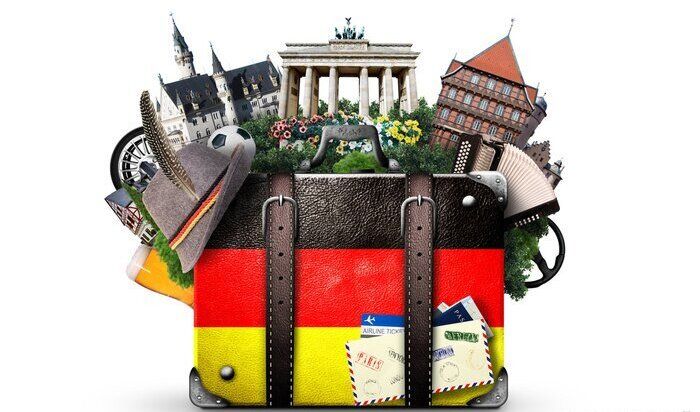Moving to Germany | Guide to the most interesting places in Germany

A guide to the most interesting places in Germany to visit after a move, is sure to include many fascinating destinations. Germany, a country rich in history, culture and diverse landscapes, offers many attractions for tourists and newly moved people.
Places to visit after moving to Germany
Berlin – the capital of Germany, full of monuments such as the Brandenburg Gate, the Reichstag and the Berlin Wall. Berlin is also a centre of culture and art, with numerous galleries and museums.
Munich – known for its Oktoberfest, beautiful architecture and numerous museums. The Marienplatz and the Nymphenburg Palace are not to be missed.
Dresden – a city known as the ‘Florence on the Elbe’ for its impressive Baroque and Renaissance architecture. A visit to the Zwinger and Frauenkirche is a must.
Cologne – famous for Cologne Cathedral, one of the greatest Gothic masterpieces in the world, as well as for its vibrant cultural and nightlife.
The Black Forest Region – an idyllic, forested region known for its picturesque landscapes, traditional villages and thermal spas.
Heidelberg – a picturesque, historic city with the stunning Heidelberg Castle and the beautiful Old Town.
Rugen Island – Germany’s largest island, known for its white chalk cliffs, Baltic beaches and Jasmund National Park.
Neuschwanstein – the fairytale castle of King Ludwig II of Bavaria, the inspiration for Disney’s castle.
Hamburg – a harbour town with impressive buildings such as the Elbphilharmonie and the lively Speicherstadt district.
Rothenburg ob der Tauber – one of the best-preserved medieval cities in Europe, offering an insight into the history and culture of Germany.
Interesting places to see after moving to Germany
Northern Germany
Lubeck – known as the ‘City of Seven Towers’ and famous for its medieval architecture and as the birthplace of marzipan.
The island of Sylt – a luxury resort in the North Sea, known for its beautiful beaches and unique landscape.
Eastern Germany
Weimar – a city with a rich cultural history, known for its links to Goethe and Schiller, and as the birthplace of the Bauhaus movement.
Leipzig (Leipzig) – a dynamic city with a rich musical history, associated with Bach and Wagner.
West Germany
Düsseldorf – a centre for fashion and art, known for its modern architecture and vibrant MedienHafen district.
Trier – one of the oldest towns in Germany, with well-preserved monuments from the Roman period.
Southern Germany
Bodensee (Lake Constance) – the third largest lake in Central Europe, surrounded by picturesque towns and vineyards.
Bamberg – known for its unique medieval architecture and its famous ‘rauchbier’ (smoked beer).
Monuments of German culture and history
Museums of the Museum Island in Berlin – a collection of five world-class museums on Berlin’s Spree Island.
In the footsteps of World War II – visiting sites such as the Holocaust Memorial Museum in Berlin or the former concentration camp at Dachau.
Parki Narodowe i Przyroda w Niemczech
Sächsische Schweiz National Park – known for its unique rock formations and beautiful hiking trails.
Bavarian Forest – Germany’s largest national park, offering stunning scenery and an abundance of wildlife.
Festivals and cultural events in Germany
Richard Wagner Festival in Bayreuth – an annual musical event dedicated to the works of the famous composer.
Cologne Carnival – one of the largest and most colourful festivals in Europe.
Moving to Germany
Each of these places has its own unique history and culture, and visiting them will certainly enrich your experience after moving to Germany. By visiting these diverse places, you can gain a deeper understanding and experience the rich mosaic that is Germany’s culture and history. Each region offers something unique, from historic cities and monuments to natural beauty and dynamic cultural events.
